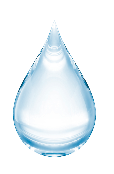

Density of some sugars, alcohols and other organic substances in water is plotted as function of wt%, mol/kg water and mol/l solution. Density of Aqueous Solutions of Organic Substances as Sugars and Alcohols - Changes in density of aqueous solutions with changes in concentration at 20☌.Density of acetic acid, citric acid, formic acid, D-lactic acid, oxalic acid and trichloroacetic acid in water is plotted as function of wt%, mol/kg water and mol/l solution. Densities of Aqueous Solutions of Organic Acids - Changes in density of aqueous solutions with changes in concentration at 20☌.Density of inorganic sodium salts in water is plotted as function of wt%, mol/kg water and mol/l solution. Densities of Aqueous Solutions of Inorganic Sodium Salts - Changes in density of aqueous solutions with changes in concentration at 20☌.Density of potassium salts in water is plotted as function of wt%, mol/kg water and mol/l solution. Densities of Aqueous Solutions of Inorganic Potassium Salts - Changes in density of aqueous solutions with changes in concentration at 20☌.Density of inorganic chlorides in water is plotted as function of wt%, mol/kg water and mol/l solution. Densities of Aqueous Solutions of Inorganic Chlorides - Changes in density of aqueous solutions with changes in concentration at 20☌.Temperature - Variations in crude oil density are shown as function of temperatur, together with volume correction factors. Temperature - Specific volume, enthalpy and entropy of compressed water. Water Systems - Hot and cold water service systems - design properties, capacities, sizing and more.Steam and Condensate - Steam & condensate systems- properties, capacities, pipe sizing, systems configuration and more.Densities - Densities of solids, liquids and gases.Material Properties - Material properties of gases, fluids and solids - densities, specific heats, viscosities and more.See also Properties of Water - Imperial Units and Water - Thermodynamic Properties - SI units Specific volume (0-212☏ at 1 atm, >212 ☏ at saturation pressure) Water specific volume at temperatures given in degree Fahrenheit: Temperature Specific volume (0-100☌ at 1 atm, >100 ☌ at saturation pressure) Water specific volume at temperatures given in degree Celcius: Temperature See also Water Boiling points at high pressure, Boiling points at vacuum pressure, Density, specific weight and thermal expansion coefficient, Dynamic and kinematic viscosity, Enthalpy and entropy, Heat of vaporization, Ionization Constant, pK w, of normal and heavy water, Melting points at high pressure, Saturation pressure, Specific gravity and Specific heat (heat capacity)for online calculatores, and similar figures and tables as shown below. See Water and Heavy Water - thermodynamic properties. The specific volume of water depends on temperature as shown below: Temperature Choose the actual unit of temperature: The output specific volume is given as cm 3/g, ft 3/lb, gal(US liq)/lb and ft 3/ sl. The calculator below can be used to calculate the liquid water specific volume at given temperatures.
#Water volume calculator plus
Step 5 - Scroll down to see the total volume in litres plus how much of each product is required for your tank.Specific volume is the inverse of density, or the ratio of the volume to the mass of a substance: Step 4 - Click on 'What's the volume?' This will give you your total aquarium and filter water volume in Litres.

If you are using an internal aquarium filter, leave the Filter Volume box with the default '0' entered also. If you are using a sump, use the Aquarium Volume Calculator first to measure the water volume of the sump, then repeat the process for the Aquarium entering the measurements into the corresponding boxes including the sumps 'Filter Volume' in Litres. Empty the filter into a measuring container and enter the amount of water the filter holds in the 'Filter Volume' box. If it's not available, search online for the filters' water volume or use a measuring jug or bucket to fill it to maximum capacity with all of the filter media in place. Step 3 - Check the volume of your external canister filter or sump - sometimes located in the user manual. Make sure you enter the actual water depth and NOT the aquarium glass height. Step 2 - Enter the Internal measurements of your aquarium in centimetres into the corresponding blank boxes provided as per the illustration. Select Rectangular, Cube, Corner, Cylinder or Half Cylinder then click the "Update" button.


 0 kommentar(er)
0 kommentar(er)
